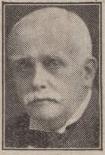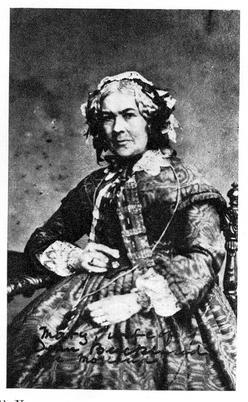Henry Gwynne Vevers was a marine biologist and intelligence officer. Son of Geoffrey Marr Vevers, Superintendent at London Zoo. Vevers attended St Paul's School, then Magdalen College, Oxford. He travelled to Greenland with the Oxford University Exploration Club in 1936 and to the Faeroe Island in 1937 to collect mouse and gannet statistics. From the Faeroes and Iceland in 1937-39 he reported to the naval intelligence division of the Admiralty on the German ships which were charting deep-water channel and continuing intelligence gathering for several decades. From 1945-55 he carried out research at the Marine Biological Laboratory at Plymouth, publishing his first book, The British Seashore, in 1954. He edited the Journal of Zoology and the Zoological Record. He was curator of the aquarium at London Zoo and vice-president of the Linnean Society
Ernest William MacBride was a marine biologist and one of the last supporters of Lamarckian evolution. He served on the Council of the Zoological Council of London for over thirty years and acted as Vice-President
Marine Biologist
Stanley Wells Kemp was an English marine biologist. In 1910 he joined the Zoological and Anthropological section of the Indian Museum, and when the organisation was converted in 1916 to the Zoological Survey of India, he became Superintendent and took up the study of crustaceans to continue work started by James Wood-Mason and Alfred William Alcock. He spent fourteen years in India during which he published seventeen papers on the decapods of the Indian Museum. He undertook expeditions to Baluchistan, Andaman Islands, the Abor Hills, Garo Hills and Rameshwaram. In 1910 he became a Fellow of Calcutta University and a Fellow of the Asiatic Society. In 1924 he returned to Ireland to become the first director of research in the Discovery investigations. He was Director of the Marine Biological Association from 1936 to 1945. Among the discoveries he made were the first onychophoran from the Indian region which he named as Typhloperipatus williamsoni
Palaeontologist, marine biologist and scientific illustrator.
She was born in 1797 in Sheepstead House, Abingdon-on-Thames, to Benjamin Morland, a solicitor, her mother, Harriet Baster Morland, died when she was a baby and her father remarried. She was educated in Southampton, and spent a part of her childhood under the care of Sir Christopher Pegge, a Regius Professor of Anatomy in Oxford, who along with his wife supported her scientific interests.
In the midst of her teenage years she was intrigued by the studies conducted by Georges Cuvier and provided him with specimens and illustrations. Buckland established a name for herself as a scientific draughtswoman, who helped Conybeare, Cuvier, and her soon to be husband, William Buckland.
In 1825 Mary married Buckland, who later became Dean of Westminster. Their honeymoon was a geological tour lasting a year, including visits to geologists and geological locations across Europe. They had nine children, including Frank Buckland and author Elizabeth Oke Buckland Gordon. The children were exposed to their parents' collections of fossils from an early age and at the age of 4, Frank could successfully identify the vertebrae of an ichthyosaurus. Buckland supported her husband's pursuits, while balancing her time to help educate, and teach her children. She also spent time promoting education within the villages. During her marriage, her desire to pursue science was limited because of her husband's disproval of women being engaged in scientific pursuits.
Mary Buckland assisted her husband greatly by writing as he dictated, editing, producing elaborate illustrations for his books, taking notes of his observations, and writing much of it herself. Her skills as an artist are on display in William Buckland's largely illustrated work Reliquiae diluvianae, published in 1823, and in his Geology and Mineralogy in 1836. She assisted William Buckland's experiments to reproduce fossil tracks and many others. She assisted him when he was commissioned to contribute a volume to The Bridgewater Treatises.
In 1842 Mary's husband fell ill and his mental health began to decline. In 1850 he was sent to John Bush's Mental Asylum at Clapham in London. Shortly after, Mary retired to St Leonards-on-Sea in Sussex.
Although Mary Buckland was in poor health after her husband's death, she continued her husband's work and branched out her own research. Examining micro forms of marine life through a microscope, with her daughter Caroline, and arranging a large collection of zoophytes and sponges, which she collected during her visits to the Channel islands of Guernsey and Sark with her husband. Much of her fossil reconstructions are held by the Oxford University Museum of Natural History.
Mary died in St Leonards on 30 November 1857, and was buried in Islip, Oxfordshire.
Edgar Johnson Allen was a British marine biologist. He was elected a Fellow of the Royal Society in 1914 and won the Gold Medal of the Linnean Society in 1926 and the Royal Society's Darwin Medal in 1936. Allen was the fifth Director of the Marine Biological Association of the United Kingdom, serving from 1894 to 1936

